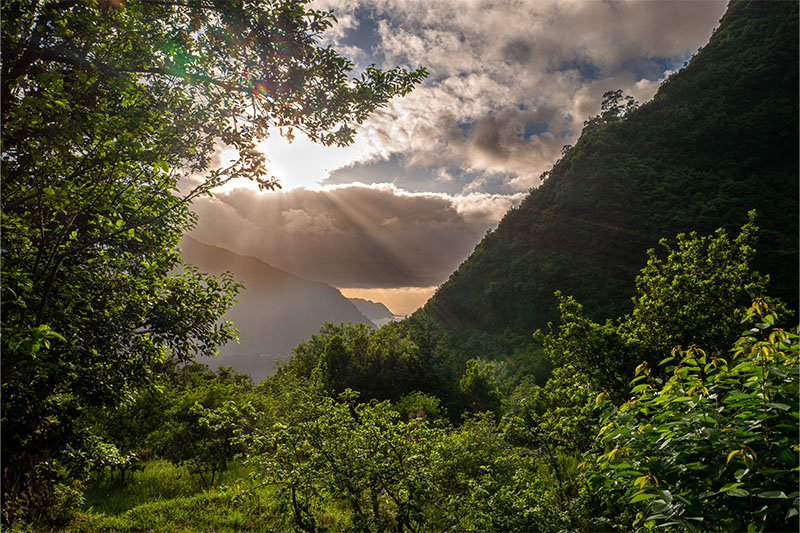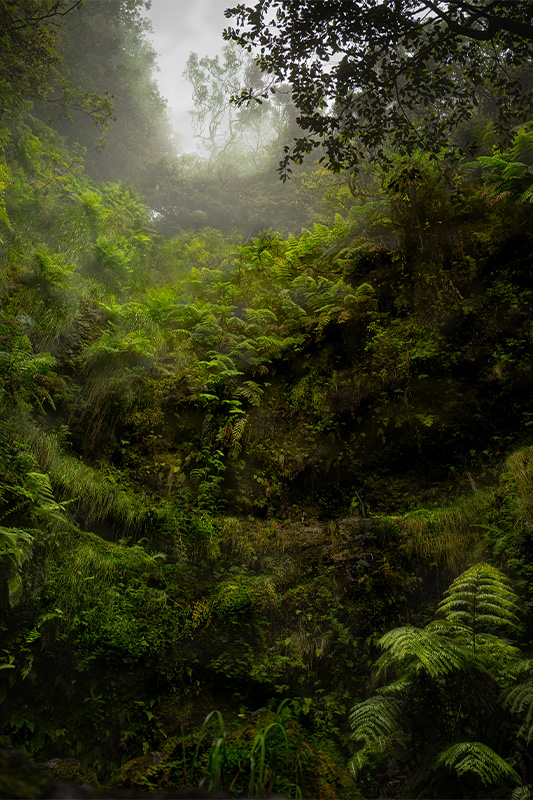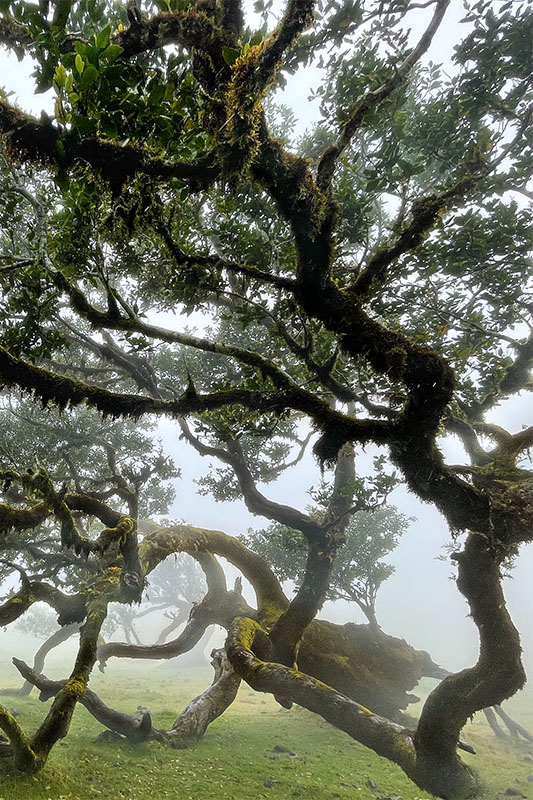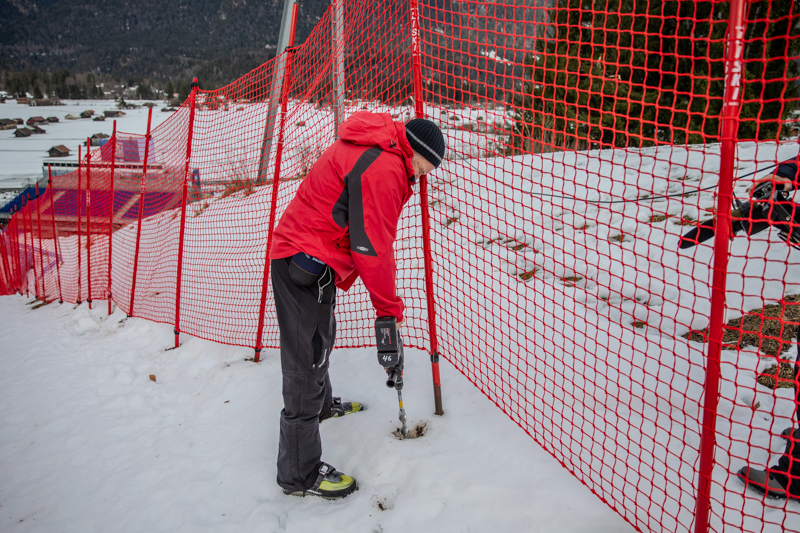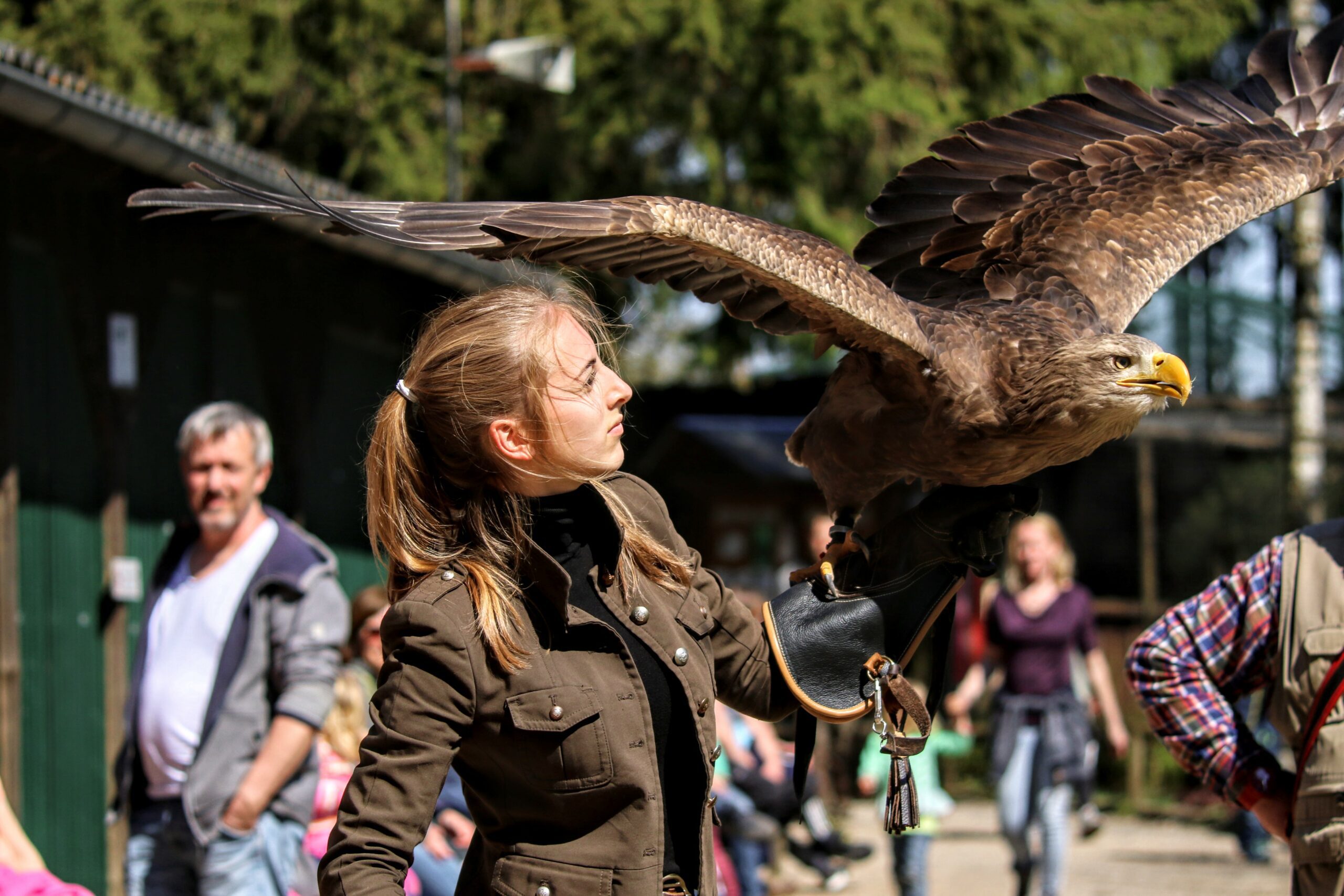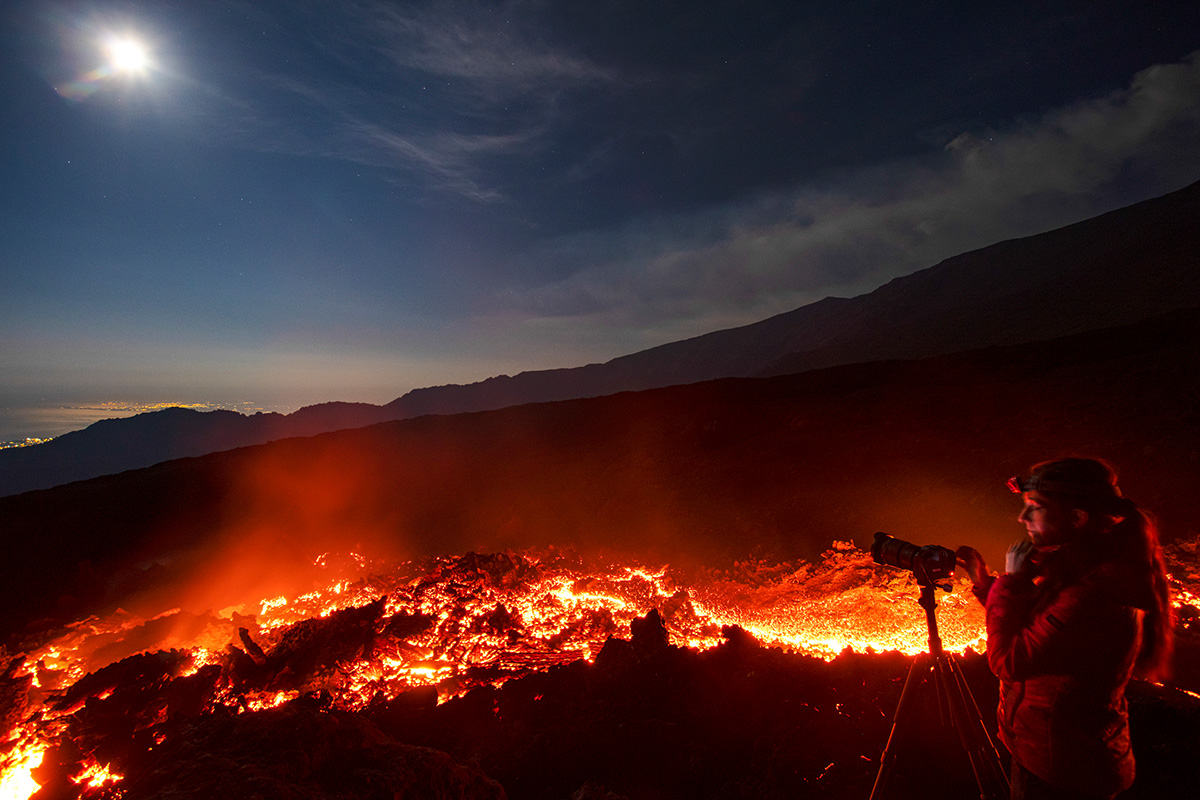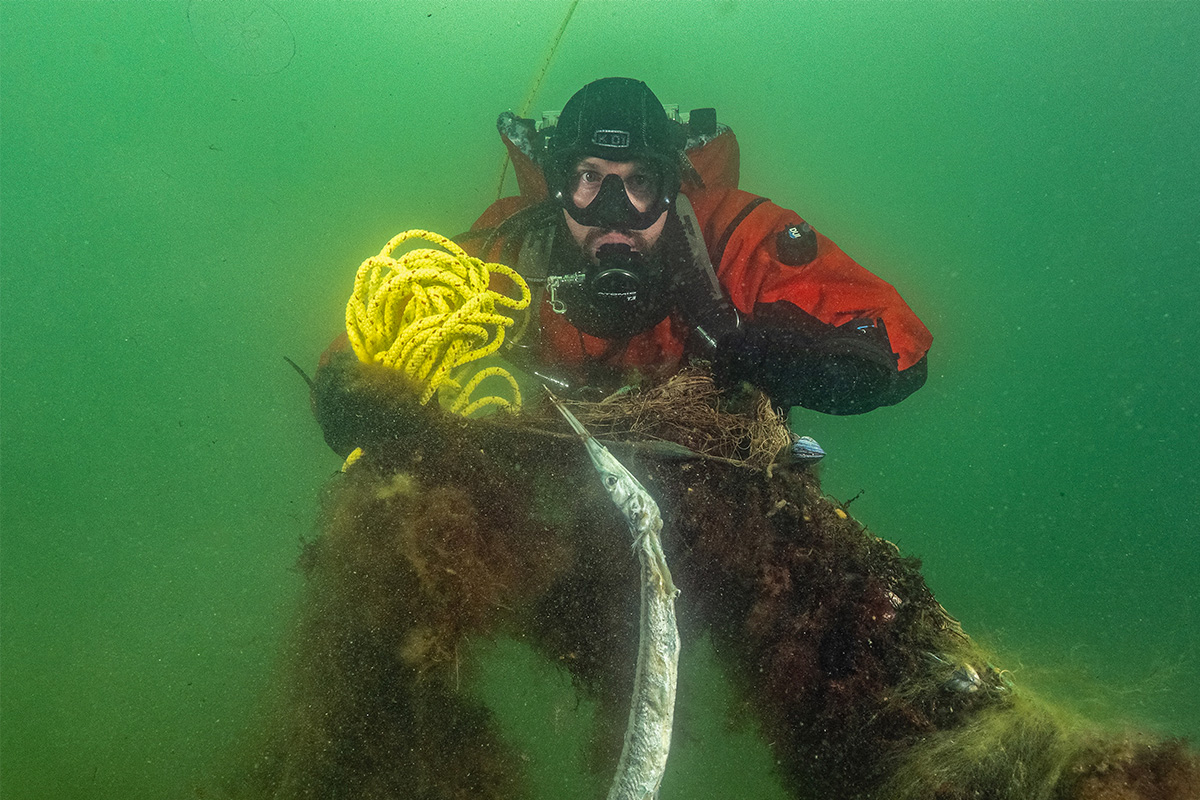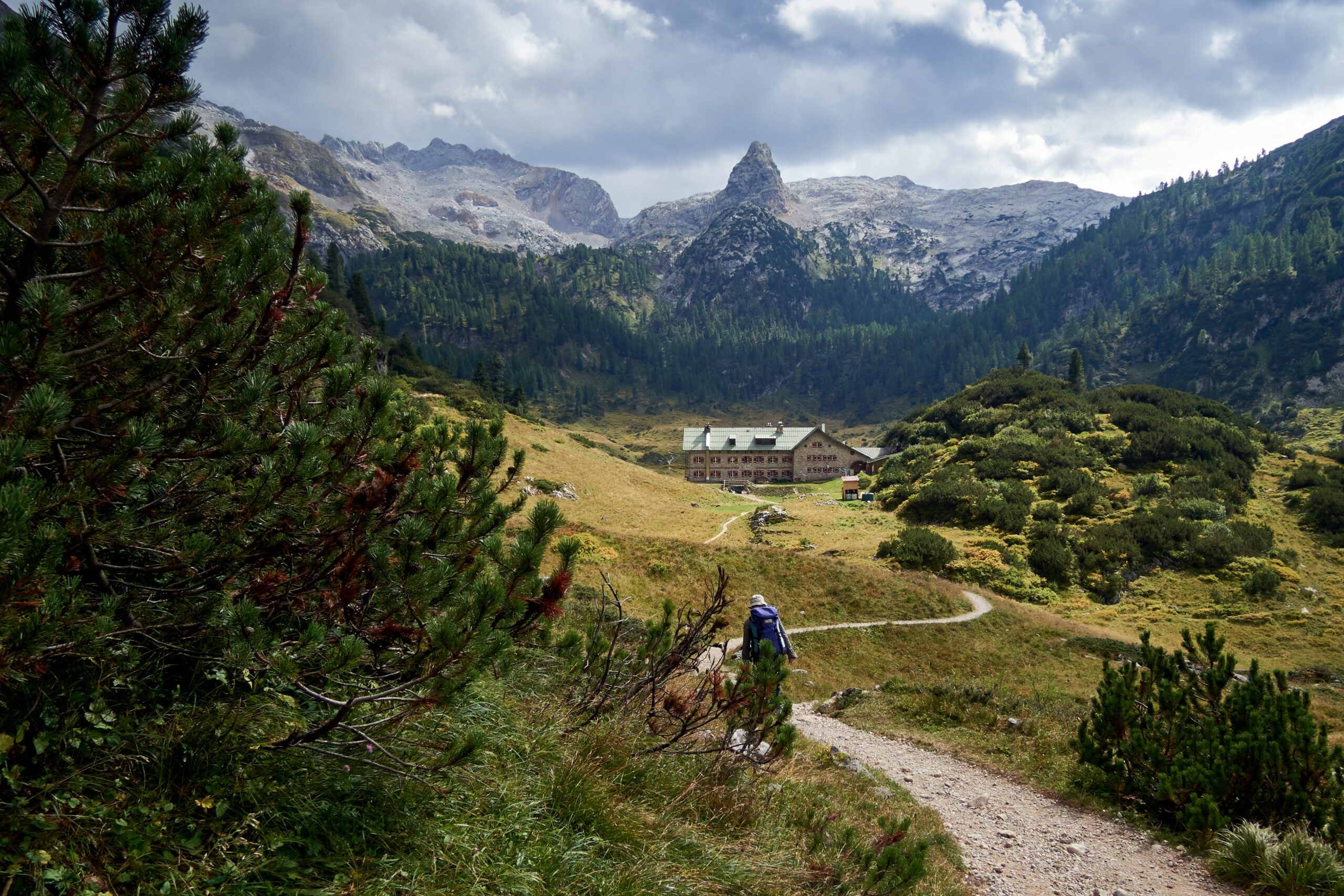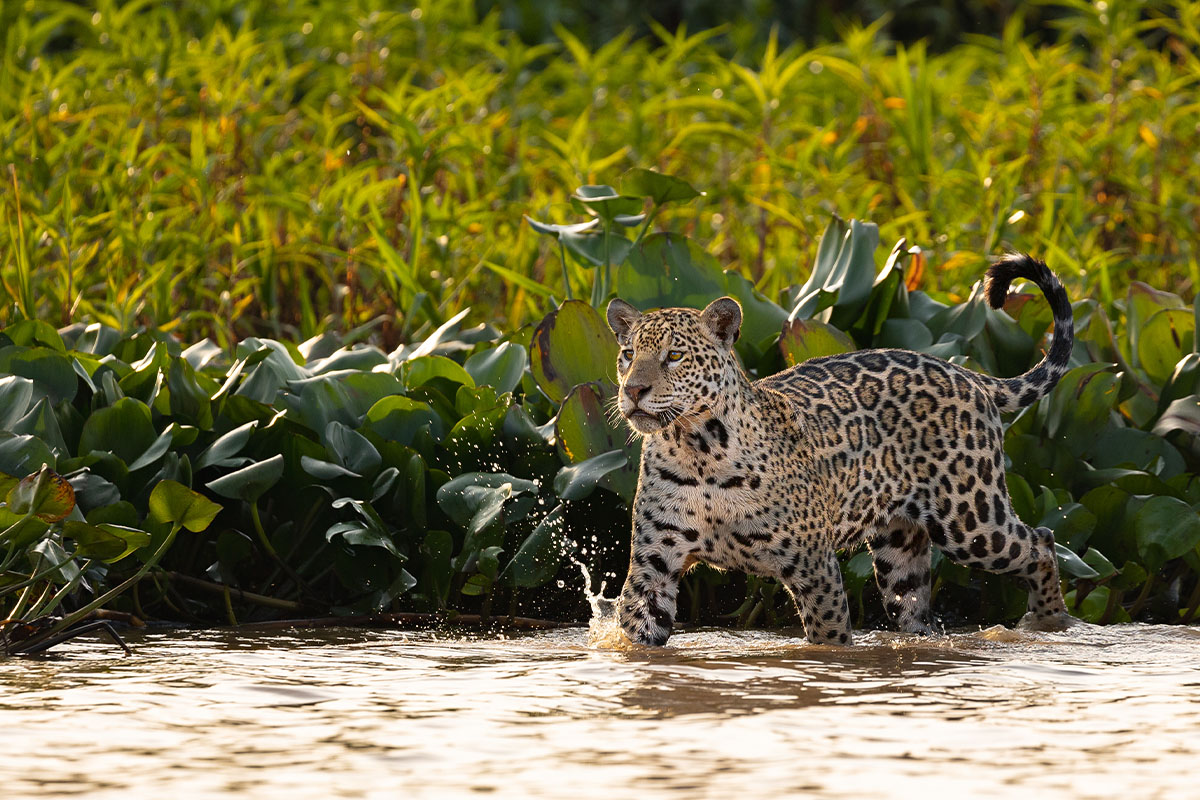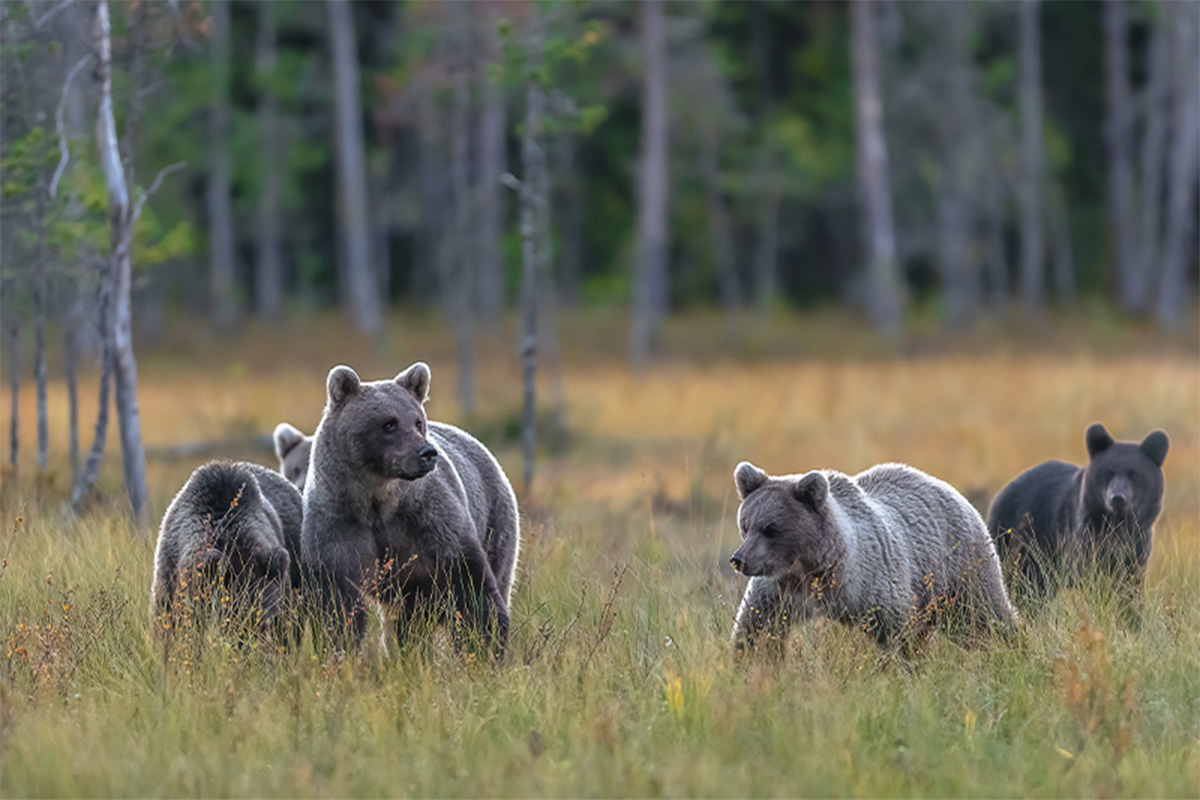Author Paula Kormos discovers the island of flowers
During my travels around the globe, I’ve seen a host of spectacular landscapes, from the jungles of Africa to the wild forests of Canada to the Amazon rainforest – to name just a few. Yet, nowhere have I seen and experienced such vibrant, rich, lush and utterly breathtaking natural landscapes in such a small area as I did on Madeira. The mixture of rain, sun, fog, wind and clouds makes this archipelago a truly unique and spectacular place. It is as though each change in the weather transforms the island into something new. Every day and every foot climbed has surprises in store for all keen walkers and outdoor enthusiasts.
The fog hangs heavy on the rich greenery, enveloping the wild mountain landscape around me in a mysterious shroud. Mosses, ferns, monsteras and ancient laurel trees line my way along the levada – an irrigation system hewn into the rock, criss-crossing across almost the entire island. The levadas carry water from the rainy mountainous areas in the north to the drier, lower regions, turning the island into a lush, blooming paradise.
The narrow path leads me along steep cliffs that plunge into a bottomless void of dense fog. Only a thin wire cable “secures” the footpath and serves as the only barrier between the rocky path and the abyss beside me. From here, the cliff plummets hundreds of feet straight down into the blanket of fog. Somewhere distant, I can hear the wild roar of the Atlantic crashing into the rugged volcanic coast.
A small island with magnificent scenery
Madeira is one of a group of islands in the middle of the Atlantic Ocean, almost 700 miles from the Portuguese mainland. The volcanic archipelago can be summed up in three words: raw, wild and beautiful. Madeira is the largest island, with an area of 286 sq mi, and has many monikers, from the Island of Eternal Springtime and the Flower Island to the Floating Garden and the Hawaii of Europe – and every single one is perfectly apt! Thanks to its mild climate, the island is blessed with greenery all year round. It rarely drops below 15°C (59°F) in winter, and late summer days are not usually warmer than 25°C (77°F). In addition to countless flowers, the island also produces avocados, pineapples, bananas, papayas, passion fruit and sugar cane. Due to its variety of microclimates, Madeira also offers unbelievable biodiversity and a stunning range of landscapes in a compact space. The north is rainy and therefore particularly lush, while the subtropical climate in the south provides drier, sunnier conditions.
Equipped for all weathers
With this in mind, anyone planning to go hiking on Madeira should prepare for all eventualities to be on the safe side. In the higher-altitude regions, the weather can change very suddenly, with light drizzle turning into driving rain, strong winds and impenetrable fog. Further below towards the coast, the weather is usually at its best, with a pleasant 22°C (72°F) and sunshine – and you could stop off in one of the lava pools along the coast for a dip on your walk back to the hotel. So, it’s always a good idea to pack your bathing suit or a bikini in your rucksack (or just go hiking in your swimming trunks). Thousands of miles of (often very challenging) walking trails with steep climbs up to 6,100 ft make the island a true Mecca for hikers, mountain bikers and lovers of the great outdoors.
My path along the levada took me past craggy coastlines, deep green gorges and through long caverns carved into the rock. Hunched over and equipped with a pocket torch, I forge my way through the pitch-black darkness and back into the sea of green. The path ends at a waterfall some three-and-a-half hours later (allowing for a few photo stops). And, as I’m a hardened hiker, I take a dip in the ice-cold water that has mirrored my journey along the levada, down the mountain and into the valley.

